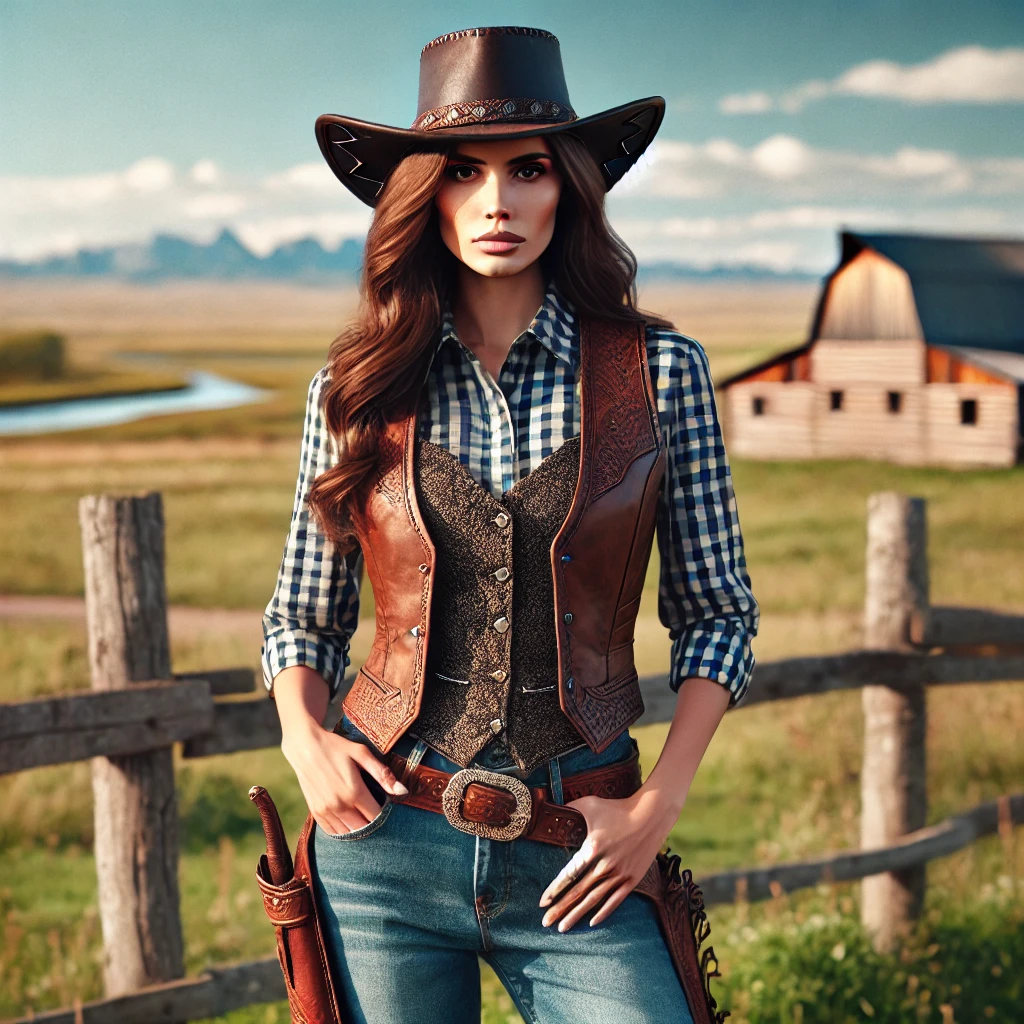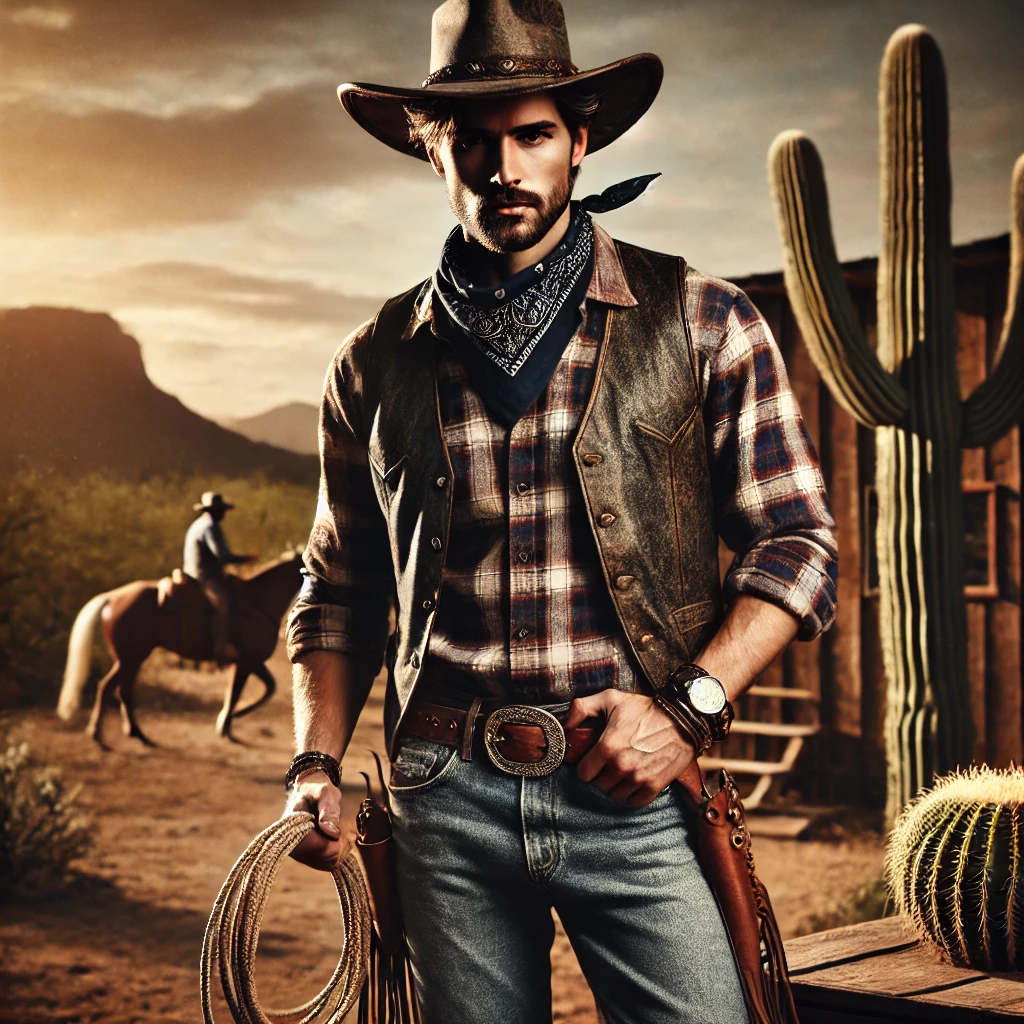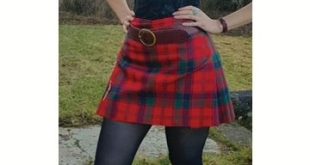How Does Cowboy Attire Help with Weather? A question associated with fashion lines is of concern nowadays. Cowboy attire is much more than a fashion statement—it’s a highly functional wardrobe designed to withstand the challenges of varying weather conditions. From scorching summer heat to harsh winds and freezing winters, every piece of cowboy clothing serves a specific purpose.
Whether it’s the iconic cowboy hat shielding from the sun or durable boots protecting against rugged terrain, cowboy attire is a testament to practicality and resilience. Let’s dive deeper into how this unique clothing style is perfectly tailored to adapt to different weather extremes. Explore in detail “How does Cowboy attire help with weather” in this post:

Key Takeaways:
- The Cowboy Hat: A Shield Against the Sun and Rain
- Bandanas: A Multi-Purpose Weather Accessory
- Cowboy Boots: Durability and Weather Resistance
- Denim Jeans: Tough and Weather-Resistant
- Jackets and Dusters: All-Weather Outerwear
The Role of Cowboy Attire in Weather Adaptation:
Cowboys historically worked long hours outdoors in unpredictable conditions, requiring clothing that could keep them comfortable, safe, and efficient. Their attire was designed not just to look iconic but also to be highly functional in protecting them from the elements. The following sections explore how each element of cowboy attire contributes to weather protection.
Does Cowboy Clothing Have Anything to Do with the Weather?
1. The Cowboy Hat: A Shield Against the Sun and Rain
The wide-brimmed cowboy hat is perhaps the most recognizable part of the cowboy look. Its design provides excellent protection from the sun, keeping harmful UV rays off the face, neck, and shoulders during long hours in the sun. In rainy conditions, the hat’s brim deflects water, keeping the face and upper body dry. Some cowboy hats are made with waterproof materials, adding an extra layer of functionality for rainy days.
In winter, felt cowboy hats provide warmth, insulating the head and retaining body heat. Whether it’s summer or winter, the cowboy hat is a versatile tool for battling the elements.
2. Bandanas: A Multi-Purpose Weather Accessory
Cowboys often wore bandanas around their necks, not just as a style statement but as a versatile tool for weather protection. In hot weather, a damp bandana around the neck cools the body, while in dusty conditions, it can be pulled over the mouth and nose to filter out debris. During cold weather, bandanas add an extra layer of insulation around the neck, protecting against chilly winds.
3. Cowboy Boots: Durability and Weather Resistance
Cowboy boots are designed for rugged terrain and unpredictable weather. The high shafts protect legs from mud, water, and snake bites, while the sturdy leather construction resists wear and tear. Many cowboy boots are designed with waterproof materials to keep feet dry during rain or snow.
Additionally, the raised heels of cowboy boots provide better grip in muddy or slippery conditions, making them highly practical for outdoor work in challenging environments.
4. Denim Jeans: Tough and Weather-Resistant
Cowboys traditionally wore heavy-duty denim jeans, which offered durability and protection in harsh working conditions. Denim is an excellent fabric for withstanding wear and tear, while its thickness provides insulation in cold weather. During hot weather, loose-fitting jeans allow airflow, keeping the body cooler than tighter clothing.
5. Jackets and Dusters: All-Weather Outerwear
For colder or rainy conditions, cowboys wore thick wool or leather jackets to keep warm. Long dusters, often made from oilskin, were particularly effective in protecting against rain and wind. These coats extended below the knees, ensuring full-body coverage and keeping clothes underneath dry.
In addition to warmth, these outerwear pieces were designed with large pockets for carrying essential tools, making them both functional and weather-resistant.
The Modern Relevance of Cowboy Attire
Today, cowboy attire remains popular not just for its iconic style but also for its functionality. Ranchers, outdoor workers, and even enthusiasts in colder climates still rely on cowboy clothing to brave the elements. The timeless design of cowboy attire proves that it isn’t just a relic of the past but a practical solution for managing weather challenges.
Moreover, modern innovations in materials—like waterproof leather and breathable fabrics—have further enhanced the practicality of cowboy clothing while keeping its traditional look intact.

How Does Cowboy Culture Clothing Help with the Weather Here?
Cowboy culture clothing is designed to handle the tough and unpredictable weather of the American West. Wide-brimmed hats provide shade from the scorching sun and protect against rain, while bandanas help keep dust out of the face. Durable denim jeans and leather chaps shield against thorny brush and harsh winds.
Cowboy boots offer sturdy footing on rough terrain, and layered clothing, like flannel shirts and vests, help regulate body temperature in fluctuating conditions. This practical attire ensures comfort and protection in both hot summers and chilly nights.
How Cowboy Attire Balances Style and Functionality?
What sets cowboy attire apart is its ability to merge style with functionality. While these garments serve specific weather-related purposes, they also make a bold fashion statement. Whether you’re riding horses, working on a ranch, or simply appreciating the Western aesthetic, cowboy clothing ensures you stay prepared for whatever nature throws your way.
The craftsmanship and thoughtfulness behind cowboy attire highlight its enduring appeal and relevance, showcasing how practicality and tradition can go hand in hand.
Conclusion
Cowboy attire is a brilliant example of how clothing can be tailored to withstand diverse weather conditions while maintaining timeless appeal. Each piece of cowboy clothing—whether it’s the wide-brimmed hat, durable boots, or rugged denim—plays a crucial role in protecting against the elements, offering both comfort and practicality.
So, how does cowboy attire help with weather? By blending tradition, craftsmanship, and functionality, it equips wearers to adapt to the toughest conditions. From sun protection to insulation against the cold, cowboy attire proves that it’s much more than just a style—it’s a way of life for those who work and thrive in the great outdoors.
FAQs
1. Why do cowboys wear wide-brimmed hats?
Cowboys wear wide-brimmed hats to shield their faces and necks from the sun and rain. The brim also helps deflect rainwater, keeping the upper body dry.
2. Are cowboy boots good for winter weather?
Yes, cowboy boots are ideal for winter weather due to their sturdy leather construction and high shafts, which protect against snow and moisture.
3. Why do cowboys wear bandanas?
Bandanas are a versatile accessory that provides protection from the sun, filter out dust, and add insulation during cold weather.
4. Can modern cowboy attire still protect against harsh weather?
Absolutely! Modern cowboy clothing incorporates advanced materials like waterproof leather and breathable fabrics, enhancing its weather resistance while maintaining its traditional look.
Some Relevant Useful Resources:
How Does Hippie Clothing Help with the Weather?
How Do Kilts and Tights Help with Weather?



